You might not be able to.
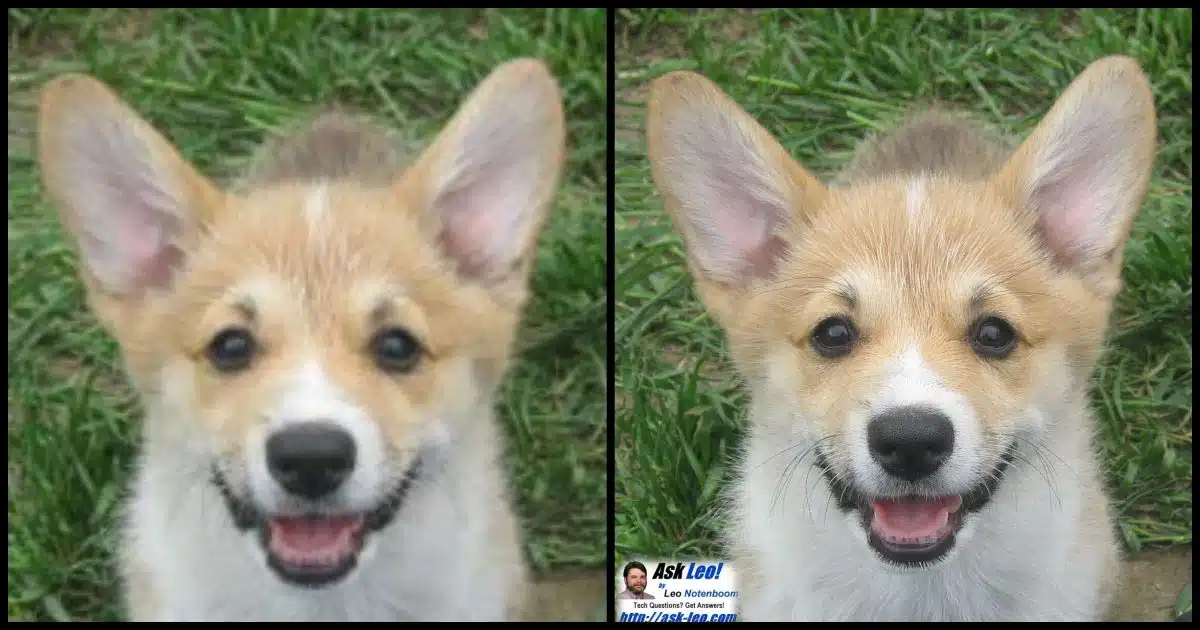
This question has one simple and one complex answer.
The simple answer is that most of the time, you can’t.
The complex answer, of course, is: it depends.

Printing website pictures
Most pictures on websites are too small to print clearly. When you stretch a tiny image to fill a sheet of paper, it gets blurry. Unless the site provides a high-resolution version you can download, there’s no way to make it look sharp, even with today’s AI tools.
Unrealistic expectations: Enhance!
I often get frustrated watching TV crime shows because I know too much. They frequently take liberties with what is and is not technologically possible.
For example, a bunch of detectives look at a blurry photo of a car in the distance, and the person in charge directs the resident computer guru to “enhance it”. Maybe even more than once. Like magic, the blurry photo of the car in the distance gets crisper and crisper, and the license plate becomes visible. The cops identify the criminal and save the day.
It doesn’t work that way… at least not the magical “enhancement” they’re talking about. If a picture is blurry, it’s blurry. If a picture has low resolution, it has low resolution. Yes, there are “enhancements” of a sort, but they all involve trading off other aspects of the image — typically decreasing the image fidelity in order to, say, increase contrast, change colors, and the like. Sometimes those “enhancements” will reveal something; sometimes, they won’t.
No enhancement will take a small, blurry image and turn it into a large, crisp one.
And that’s what you’re asking for.
Printing the puppy
Let’s use an example.

This cute photograph is a 200-pixel-wide image. On my screen, it measures approximately two inches across, meaning that my screen is roughly 100 dots per inch, or DPI.
Now, if I want to print that picture on an 8-1/2-inch-wide paper, using eight inches as the printable area, that means the printing process will need to make that picture four times wider and four times higher.
Here’s a small portion of that image when magnified four times:
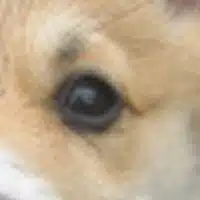
You can see the image is already starting to get a little blurry. It’s the same image as displayed above, just magnified four times.
Sadly, we’re not done magnifying.
Most printers print at resolutions of at least 300 DPI, if not much higher. The net effect is that if you print an image that is less than that (say our 100 DPI image above), then the printer (or your printing software) must also magnify that image again. In our case, that’s an additional factor of three times.
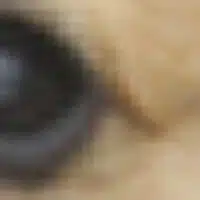
Now you can really start to see the details of jpeg compression as well as the increased blurriness of the picture. Again, this is the same picture we started with. In fact, if you were to take a magnifying glass to that original on your screen, you’d likely see something similar to this magnified version.
High-fidelity puppy
The bottom line is that on-screen images rarely print in high fidelity.
There’s just no getting around the fact that you’re magnifying a small on-screen image and printing it on a device with higher inherent resolution.
Now, there’s one exception, but it depends entirely on how the webpage was designed. And for reasons that will become clear, most webpages are not designed this way.
Here’s our puppy, once again.
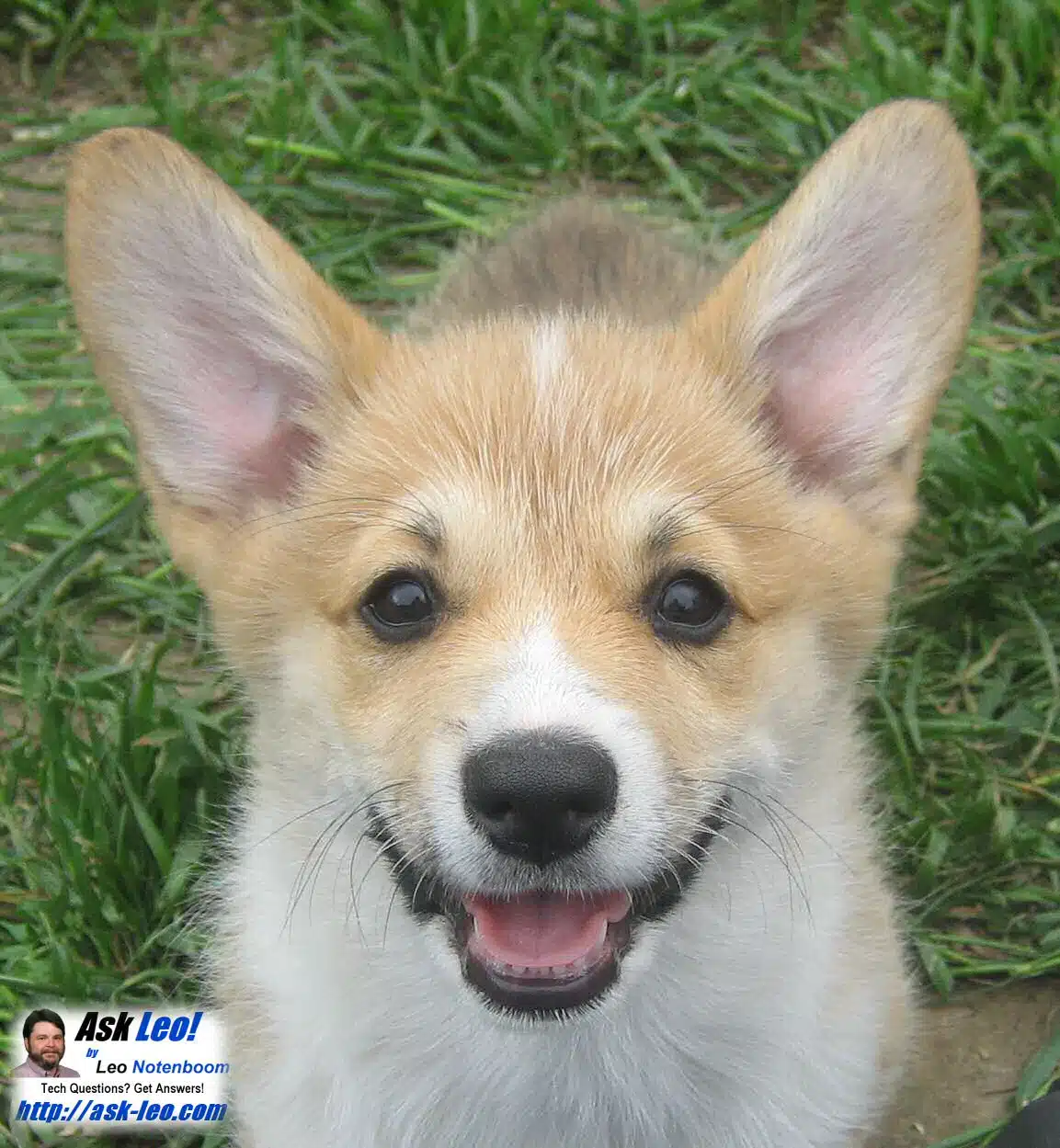
If you’re on a slow internet connection, you may notice that this version of the picture was a little slower to display. It may also look slightly different from the same-sized image earlier in the article.
The first image in this article is a 200 × 217 pixel image. This image is a 1153 × 1249 pixel image, but I’ve instructed the webpage to display it in a 200 × 217 rectangle. The browser automatically resized the very large image to fit in the tiny hole.
I’ve set it up so that if you click on that image, you’ll see it in full resolution. Since the browser already had to download it to show you the smaller version, the larger version should display very quickly.
And this would be the exception. If a small image on a webpage is set up to use a high-resolution version downsized by the browser, then printing that image will probably use the high-resolution version, giving you a much better result.

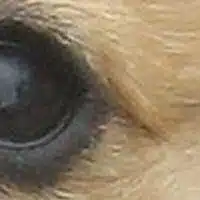
In this case, the image still had to be enlarged to show the printed equivalent, but this time by a factor of two rather than 12.
The net result, of course, is a much sharper image when printed in a larger format.
AI has entered the arena
Since I originally wrote this article several years ago, something has changed. AI “enhancement” is now available.
First, here’s our original, low-resolution image.

Now, here’s that same image, this time enhanced by the AI tool Topaz Gigapixel.
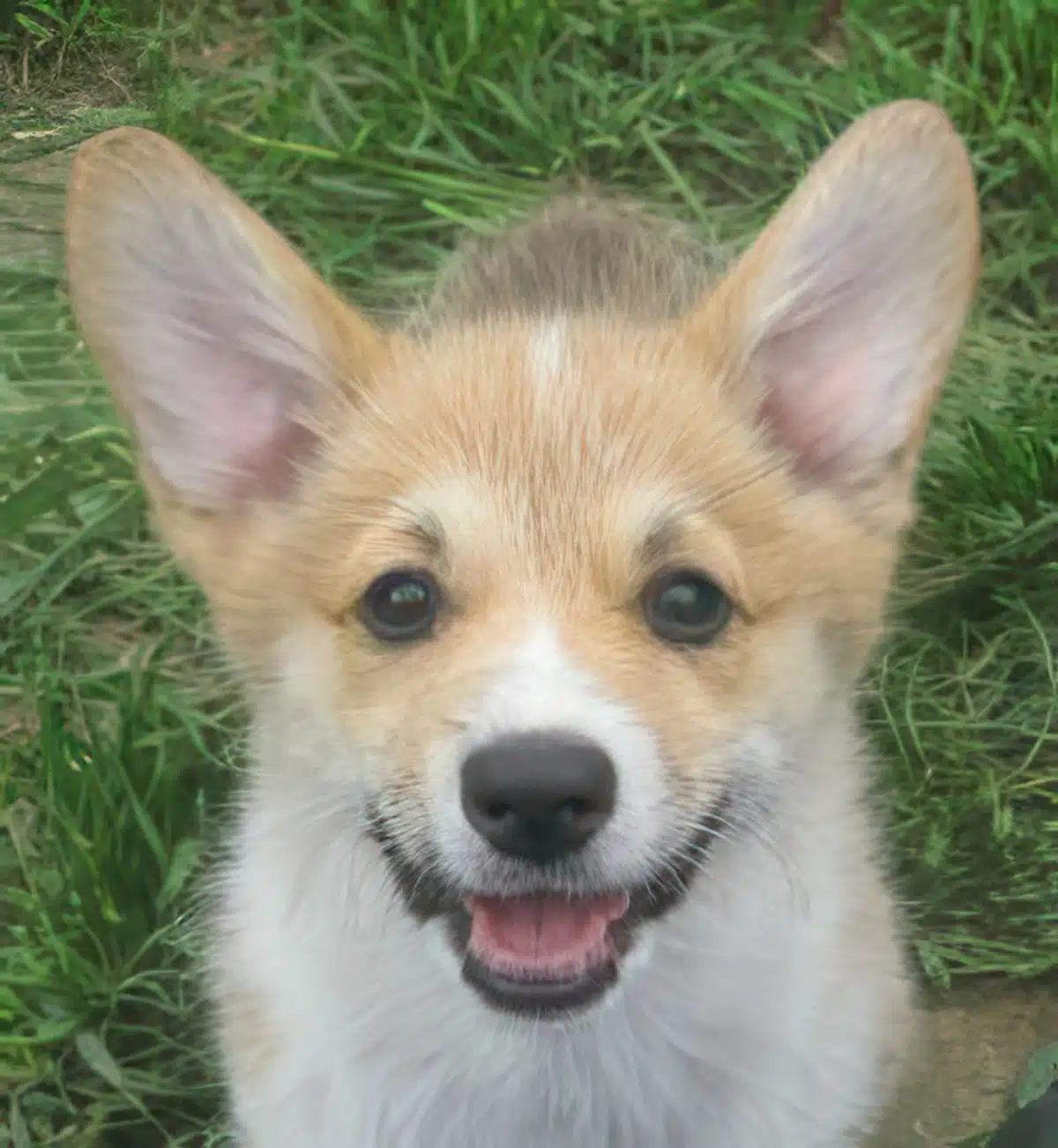
It’s not the same quality as the high-resolution original, but depending on the situation, it might be “better enough”.
The difference is simple: rather than just stretching and smoothing pixels to take up more space1, AI examines the content of the image and attempts to enhance it in ways that correspond to that content. For example, eyes are made larger in a way that makes sense for eyes, fur (or hair) is made larger maintaining the characteristics of fur, and so on.
Sadly, even AI can’t reconstruct license plate numbers that aren’t visible in the low-resolution original, no matter what the cop shows show you. At best, it’ll make something up that comes close in appearance but not in detail.
Do this
The bottom line is that for a high-resolution print to result in a sharp, clear image, you need to begin with a high-resolution image.
Most web images are not high resolution. While 200 pixels wide looks fine on a screen, it’s nowhere near high enough resolution for a high-quality print. There’s still no way to get around that.
Subscribe to Confident Computing! Less frustration and more confidence, solutions, answers, and tips in your inbox every week.
Podcast audio
Footnotes & References
1: A very crude definition of what it means to increase the size of a photo in a photo-editing app.


“You can see the image is already starting to get a little blurry. It’s the same image as displayed above, just magnified four times.”
Actually, it’s magnified 16 times. 4 times wider X 4 times higher =16 times magnified.
Hopefully most real world techs either laugh or shake their head when they see TV techs “can” do.
I’m watching Homeland. They have at least 4 cringeworthy events per hour. It’s not as bad as Law and Order though. Just look on those as comic relief.